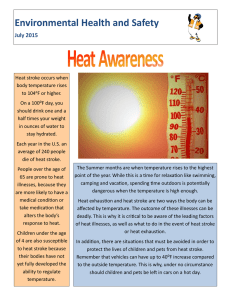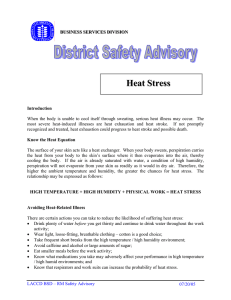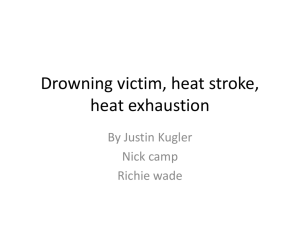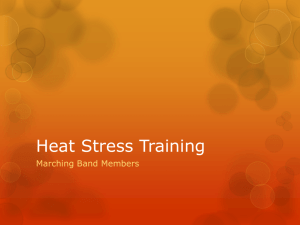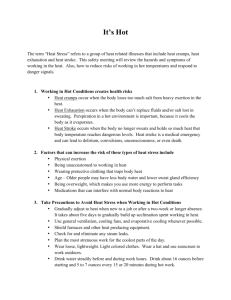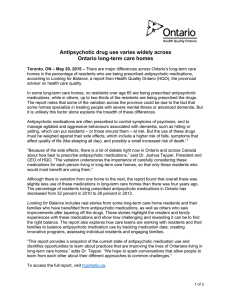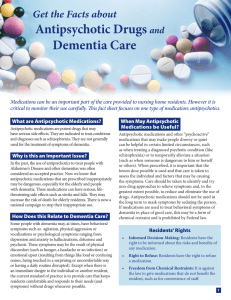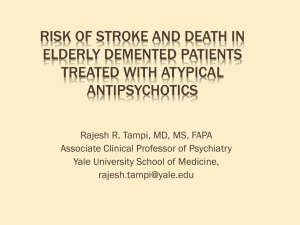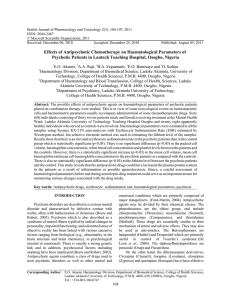MAJOR ANTIPSYCHOTIC PREVENTION OF HEAT MEDICATIONS RELATED ILLNESS
advertisement
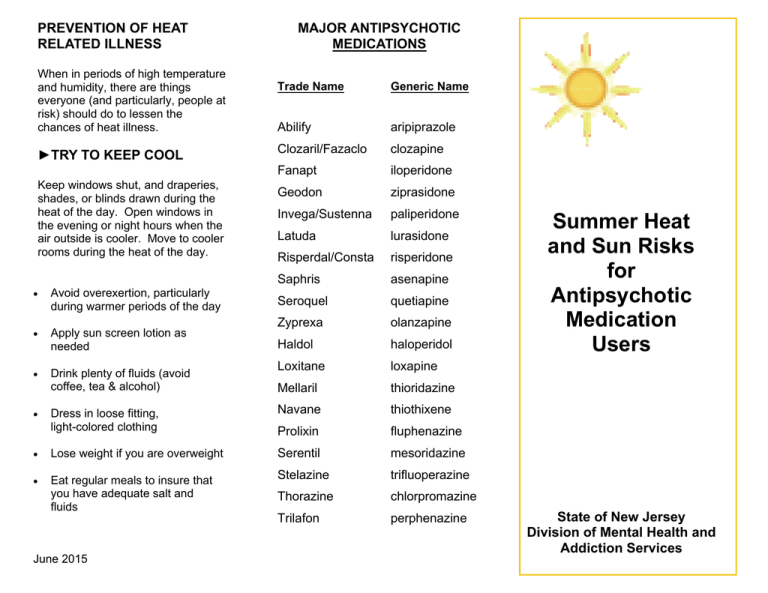
PREVENTION OF HEAT RELATED ILLNESS When in periods of high temperature and humidity, there are things everyone (and particularly, people at risk) should do to lessen the chances of heat illness. MAJOR ANTIPSYCHOTIC MEDICATIONS Trade Name Generic Name Abilify aripiprazole Clozaril/Fazaclo clozapine Fanapt iloperidone Geodon ziprasidone Invega/Sustenna paliperidone Latuda lurasidone Risperdal/Consta risperidone Saphris asenapine Seroquel quetiapine Zyprexa olanzapine Haldol haloperidol Loxitane loxapine Mellaril thioridazine Dress in loose fitting, light-colored clothing Navane thiothixene Prolixin fluphenazine Lose weight if you are overweight Serentil mesoridazine Eat regular meals to insure that you have adequate salt and fluids Stelazine trifluoperazine Thorazine chlorpromazine Trilafon perphenazine ►TRY TO KEEP COOL Keep windows shut, and draperies, shades, or blinds drawn during the heat of the day. Open windows in the evening or night hours when the air outside is cooler. Move to cooler rooms during the heat of the day. Avoid overexertion, particularly during warmer periods of the day Apply sun screen lotion as needed Drink plenty of fluids (avoid coffee, tea & alcohol) June 2015 Summer Heat and Sun Risks for Antipsychotic Medication Users State of New Jersey Division of Mental Health and Addiction Services ANTIPSYCHOTIC MEDICATIONS AFFECT BODY HEAT Antipsychotic medications may impair the body’s ability to regulate its own temperature. During hot and humid weather, individuals taking antipsychotic medications are at risk of developing excessive body temperature, or hyperthermia, which can be fatal. Individuals with chronic medical conditions are especially vulnerable, e.g. heart and pulmonary disease, diabetes and alcoholism, etc. Heat exhaustion is the most common heat-related condition, which is most likely to occur in people who are involved in physical activity outdoors during heat waves. Heat stroke is a more serious condition of dehydration and salt depletion which can be life threatening. » HEAT EXHAUSTION This can occur in both active and sedentary individuals. It happens suddenly, and may be quite brief. A doctor should be called. Recovery may be spontaneous, or intravenous fluids may be needed to prevent unconsciousness. Symptoms of heat exhaustion: Irritability or change in behavior Low or normal temperature Slight low blood pressure Rapid, full pulse and heartbeat Rapid breathing Cold, pale skin (may be ashen-gray) Profuse perspiration Dizziness, headache and weakness Nausea, vomiting Cramps in the abdominal area or in the extremities Treatment: If a person displays symptoms of heat exhaustion, he or she should be: Moved to a cooler place as soon as possible Given water or other liquids immediately (there is no need for salt) Encouraged to rest for a short time » HEAT STROKE This occurs mostly during heat waves. Persons with chronic illnesses are most vulnerable. Heat stroke, the most serious heat illness, can lead to death if left untreated. Symptoms of heat stroke: Agitation, confusion, seizures, lethargy, or coma (all may be first symptoms) High body temperature (102 degrees Fahrenheit or above) High blood pressure initially (shock may follow, resulting in low blood pressure) Rapid pulse and heartbeat Rapid, shallow breathing if person is moving about; slow and deep breathing if the person is still Hot, dry, flushed skin Treatment: As soon as you recognize the signs of heat stroke, take immediate action: Call 911 immediately Loosen or remove outer layers of individual’s clothing Move to a cool place Use CPR, if needed Replace fluids and sodium only under medical orders
